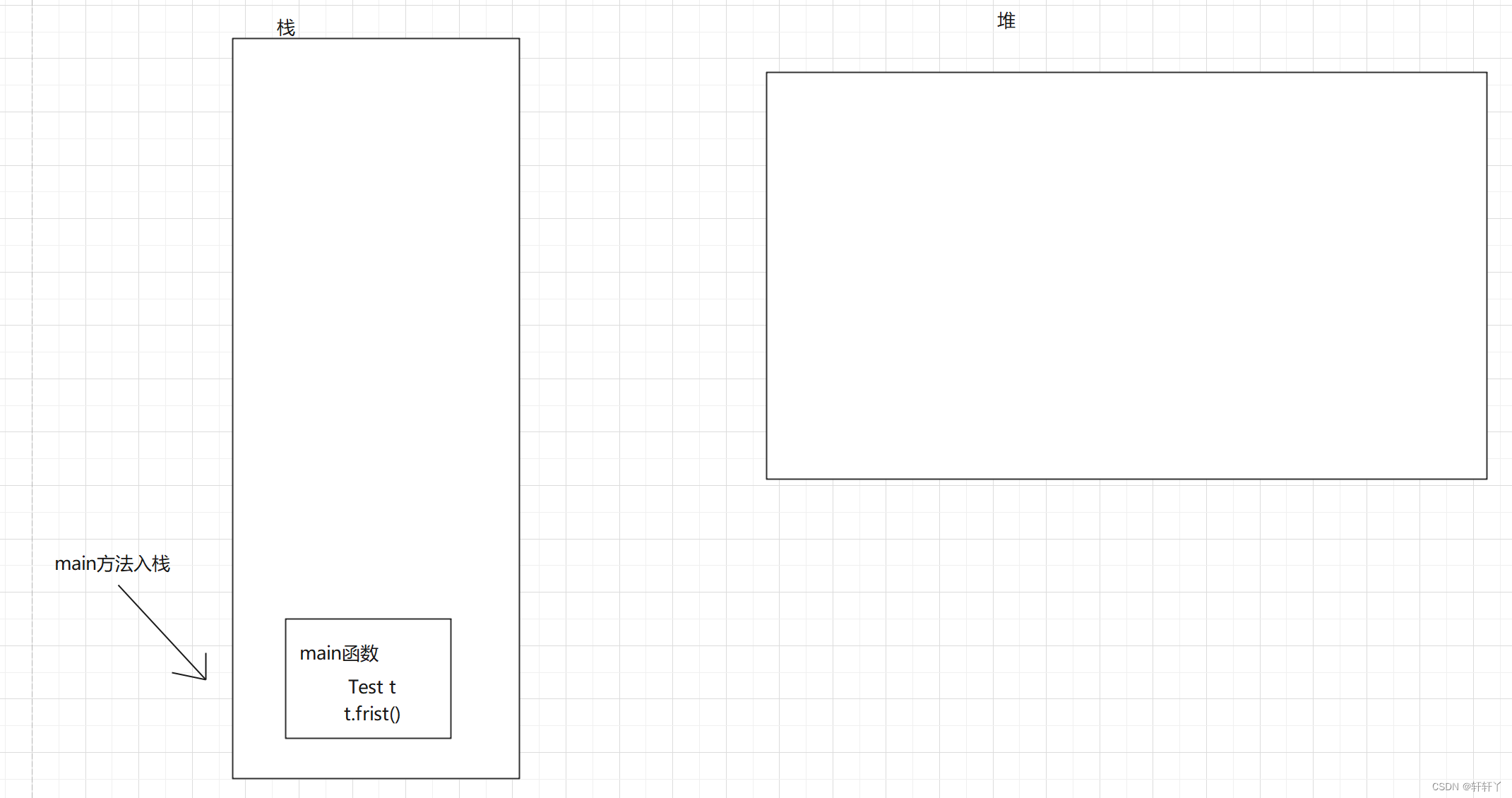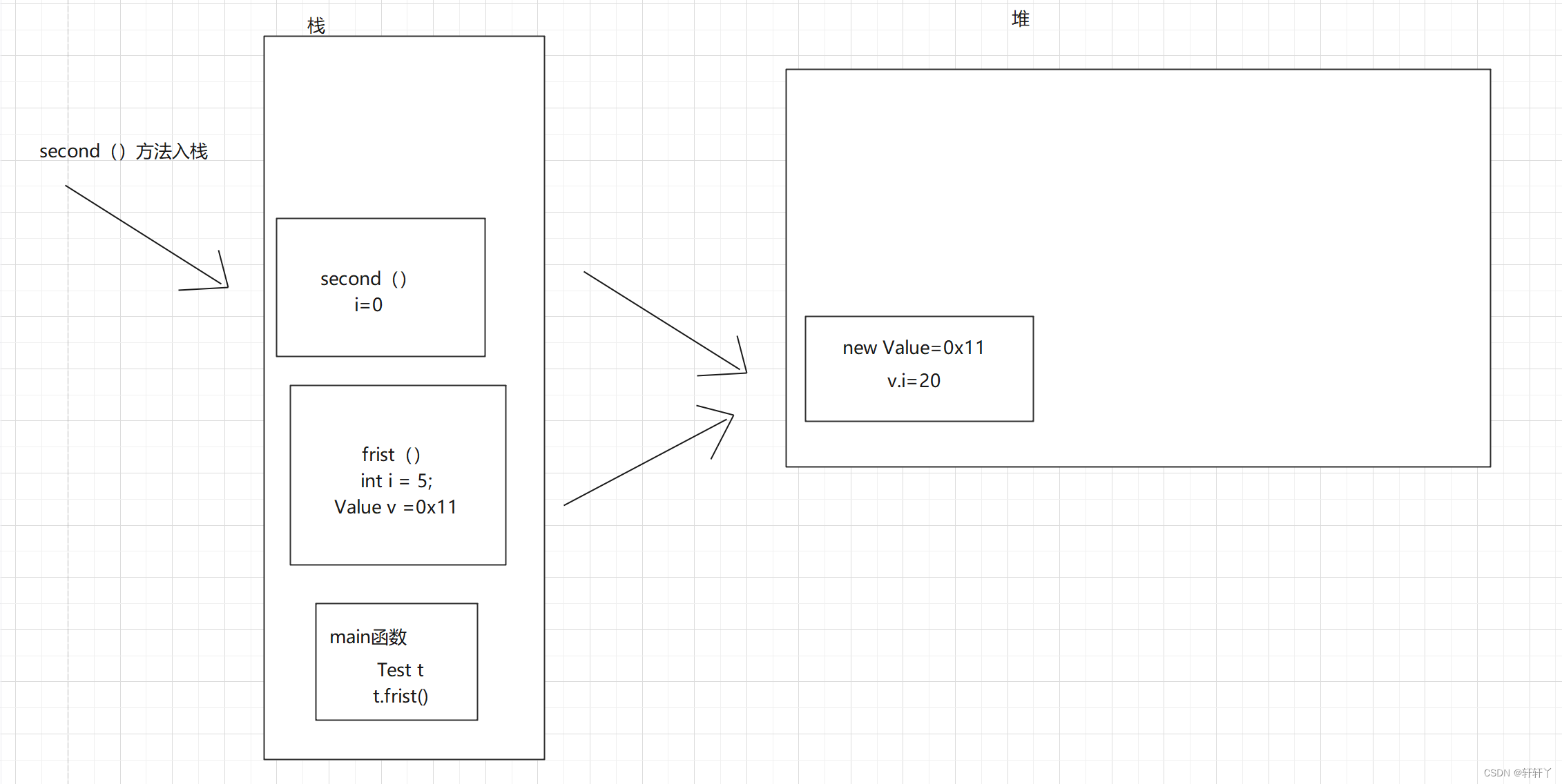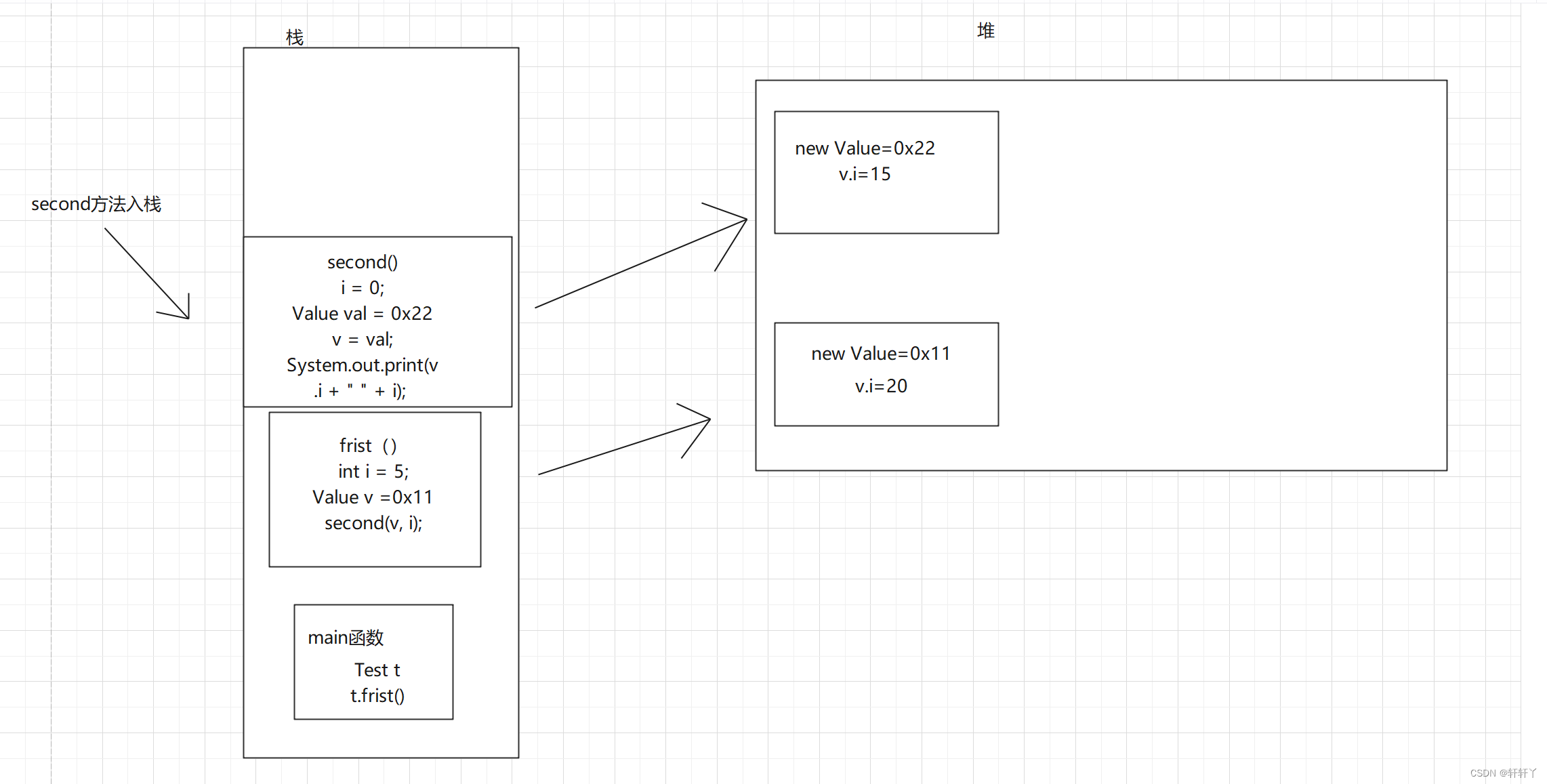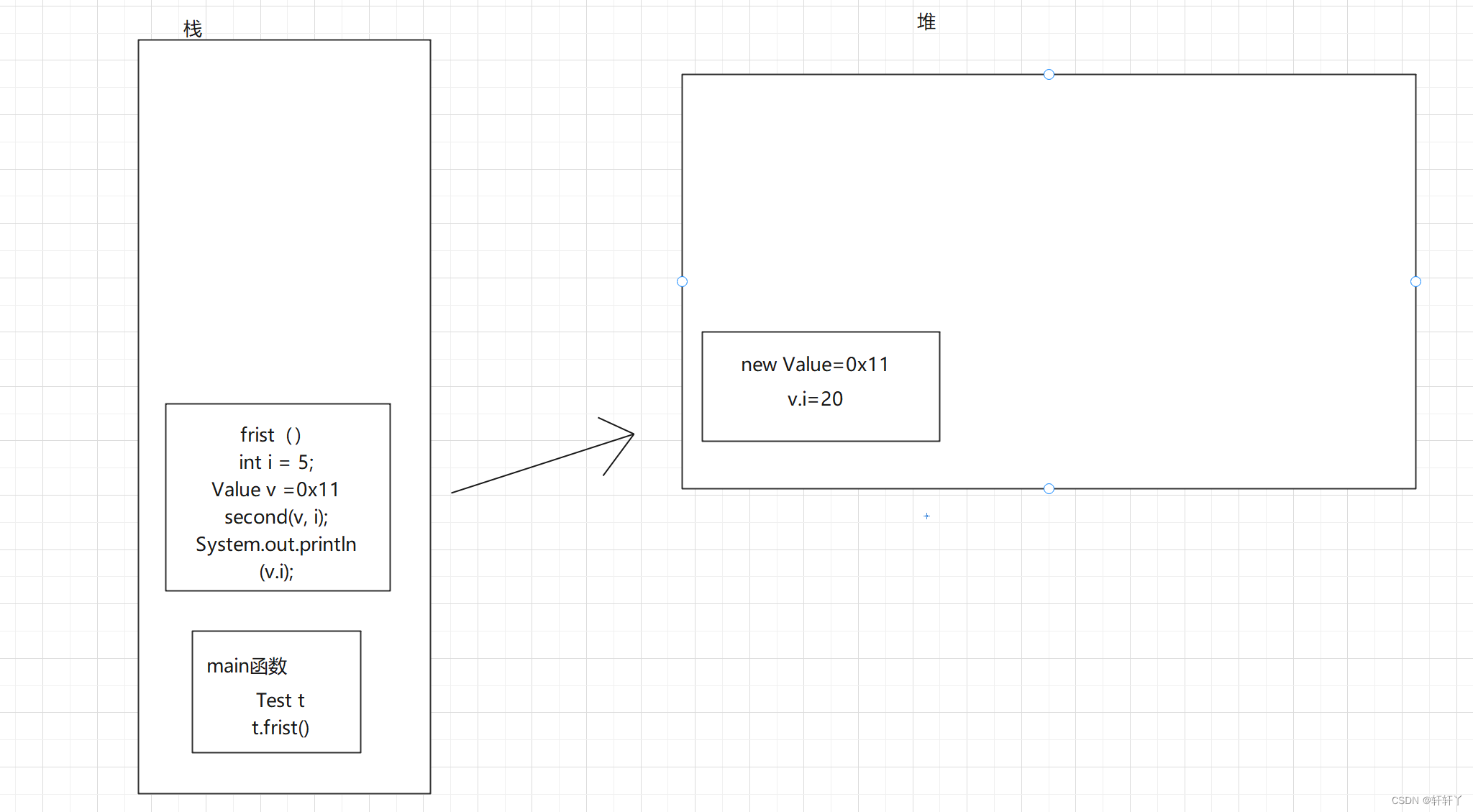Java面向对象————封装之值传递与引用传递例题解析
发布时间:2024年01月16日
写出程序的执行结果()
class Value{
int i = 15;
}
class Test{
public static void main(String argv[]) {
Test t = new Test();
t.first();
}
public void first() {
int i = 5;
Value v = new Value();
v.i = 25;
second(v, i);
System.out.println(v.i);
}
public void second(Value v, int i) {
i = 0;
v.i = 20;
Value val = new Value();
v = val;
System.out.print(v.i + " " + i);
}
}
A.15 0 20
B.15 0 15
C.20 0 20
D.0 15 20
答案: A.15 0 20
以下是答案解析
第一步:
会先执行main方法,将main方法入栈

第二步:因为main调用了frist()方法,开始执行frist()方法,frist()方法入栈,创建了Value的对象,在堆内存中会开辟以一个对象的内存,地址为假设为0x11,v.i的值为15

第三步:执行frist()方法中v.i = 25。堆中v.i = 15;变为v.i = 25;

第四步:执行second(v,i)语句,second() 入栈,内存情况如下图,执行second()方法中v.i = 20。堆中v.i = 25;变为v.i = 20;

第五步:创建了Value的对象,在堆内存中会开辟以一个新的对象的内存,地址为假设为0x22,v.i的值为15, 执行v = val, v=ox11 变为v=ox22,并指向新的new对象地址,之后执行System.out.println(v.i+ " " + i),此时v.i = 15, i = 0,所以控制台输出15 0.

第五步:second()出栈。执行frist()方法的System.out.println(v.i).此时v.i = 20.控制台输出20.

最后答案为: A.15 0 20
文章来源:https://blog.csdn.net/weixin_58885580/article/details/135505936
本文来自互联网用户投稿,该文观点仅代表作者本人,不代表本站立场。本站仅提供信息存储空间服务,不拥有所有权,不承担相关法律责任。 如若内容造成侵权/违法违规/事实不符,请联系我的编程经验分享网邮箱:chenni525@qq.com进行投诉反馈,一经查实,立即删除!
本文来自互联网用户投稿,该文观点仅代表作者本人,不代表本站立场。本站仅提供信息存储空间服务,不拥有所有权,不承担相关法律责任。 如若内容造成侵权/违法违规/事实不符,请联系我的编程经验分享网邮箱:chenni525@qq.com进行投诉反馈,一经查实,立即删除!
最新文章
- Python教程
- 深入理解 MySQL 中的 HAVING 关键字和聚合函数
- Qt之QChar编码(1)
- MyBatis入门基础篇
- 用Python脚本实现FFmpeg批量转换
- Mechanics 1-Mechanics Toolkit(课件-编辑中)
- 现代密码学 考点汇总(上)
- OpenCV入门02:图像对象的创建和赋值
- 【MySQL】:掌握SQL中DDL的数据库定义与操作
- 【教3妹学编程-算法题】检查按位或是否存在尾随零
- (每日持续更新)信息系统项目管理(第四版)(高级项目管理)考试重点整理第7章 项目立项管理(一)
- Git 的基本概念和使用方式。
- Spark SQL基础
- docker-consul
- 第P8周:YOLOv5-C3模块实现